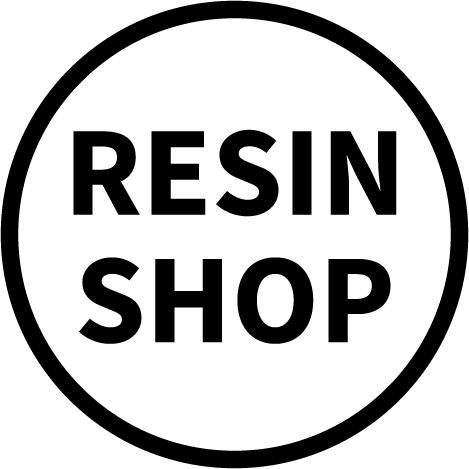Looking for Help?
Find answers to your questions
- Common Difficulties with Epoxy Resin
- Common Mistakes When Using Epoxy Resin
- Getting Started with Epoxy Resin: A Beginner’s Guide
- How to Create a Safe Working Environment for Epoxy Resin
- How to Seal a Surface Before Pouring Epoxy Resin
- Is It Necessary to Seal Before Using Epoxy Resin?
- Surfaces That Require Extra Preparation When Using Epoxy Resin
- Tips For Using Resin Shop Epoxy Resin
- Creative Techniques for Working with Epoxy Resin
- Epoxy Resin Ideas for Children
- How Epoxy Resin Is Used to Restore Old Wooden Furniture
- How to Create 3D Effects with Epoxy Resin
- How to Create a River Table with Epoxy Resin
- How to Create Epoxy Resin Coasters
- How to Create Epoxy Resin Jewellery
- How to Create the River Effect with Epoxy Resin
- How to Use Epoxy on a Concrete Floor
- How to Use Epoxy Resin on a Painting Canvas
- Advantages and Disadvantages of Using Pigments with Epoxy Resin
- Characteristics of Alcohol Ink Pigments with Epoxy Resin
- Characteristics of Pearl Pigments (Mica Pigments) with Epoxy Resin
- Most Common Pigments Used with Epoxy Resin and Their Effects
- Tips for Blending Alcohol Ink and Pearl Pigments with Epoxy Resin
- Tips for Using Alcohol Ink Pigments with Epoxy Resin
- Tips for Using Pearl Pigments (Mica Pigments) with Epoxy Resin
- What Can Cause Epoxy Resin to Crack Once Cured?
- What Causes Epoxy Resin to Have a Milky or Cloudy Appearance?
- Why Dimples and Soft Spots Occur in Epoxy Resin Once Cured
- Why Do Bubbles Appear in Epoxy Resin?
- Why Do Swirls Appear in Epoxy Resin?
- Why Epoxy Resin Doesn’t Fully Cure
- Why Epoxy Resin Isn’t Clear Once Cured
How to Create a Safe Working Environment for Epoxy Resin
Creating a safe working environment is crucial when working with epoxy resin. Follow these key guidelines to ensure a safe and efficient workspace:
🪟 Adequate Ventilation
Epoxy resin releases fumes during curing, which can be harmful if inhaled. Ensure your workspace has good airflow by:
- Opening windows
- Using a fan or ventilation system
- Working in a well-ventilated area
🛡️ Personal Protective Equipment (PPE)
Wear appropriate safety gear to protect yourself from exposure:
✅ Gloves (Nitrile recommended)
✅ Safety goggles or a face shield
✅ Respirator mask (rated for organic vapour filtration)
Choose PPE suited to the specific materials you are working with.
🧹 Organize and Declutter
A clean, clutter-free workspace minimizes the risk of accidents, spills, or contamination. Keep only essential tools and materials within reach to improve efficiency and safety.
🛑 Protective Coverings
Cover your work surface with:
- A disposable plastic sheet
- A dedicated resin work mat
This prevents spills from damaging your workspace and makes cleanup easier.
💡 Proper Lighting
Ensure your workspace is well-lit to reduce mistakes and hazards. Bright, even lighting improves accuracy and enhances safety while working with resin.
📖 Read and Follow Instructions
Always check the manufacturer’s guidelines for:
- Mixing ratios
- Curing times
- Safe handling practices
Each resin system may have specific precautions—always follow the instructions for the best results.
⚗️ Mixing and Handling
Mix epoxy in a well-ventilated area and follow the correct ratios.
❌ Avoid direct skin contact—always wear gloves.
❌ Never ingest resin or touch your face while working.
🚑 First Aid Preparedness
Keep a first aid kit in your workspace. Familiarize yourself with resin-related first aid procedures, including:
- Skin contact – Wash with soap and water
- Eye exposure – Rinse immediately and seek medical advice
- Accidental ingestion – Seek immediate medical help
♻️ Safe Disposal
Dispose of resin waste responsibly:
✅ Discard used mixing cups, gloves, and rags properly
✅ Let leftover resin cure before disposal
❌ Do NOT pour resin or solvents down the drain
Check local disposal regulations for hazardous materials.
🎓 Education and Training
Improve your knowledge by:
- Watching tutorials
- Attending workshops
- Seeking guidance from experienced resin users
Staying informed about safe resin handling practices will help prevent accidents and improve your results.
✅ Final Safety Checklist:
✔ Well-ventilated workspace?
✔ PPE ready?
✔ First aid kit accessible?
✔ Proper disposal plan?
By following these safety guidelines, you can confidently and safely enjoy your epoxy resin projects.
Updated on 21 Mar 2025
What are your Feelings?
Thanks for your feedback
QUICK LINKS
Contact information
was added to your cart
